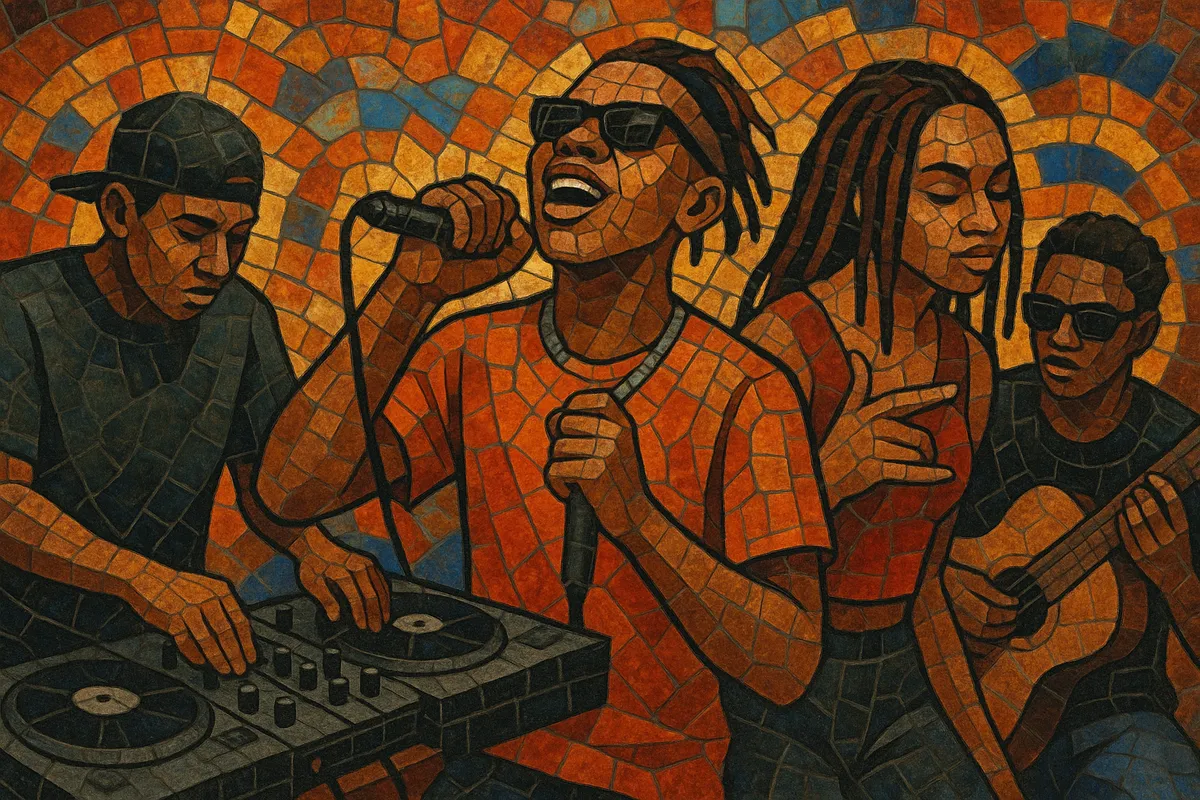Gengetone is a Kenyan urban dance genre that exploded in Nairobi’s youth culture in the late 2010s. It fuses the dembow groove of reggaeton with dancehall energy and the punchy delivery of hip hop and local genge, all wrapped in rapid-fire Sheng (Kenyan street slang), Swahili, and English.
Musically, gengetone rides a swung dembow rhythm with booming 808s, crisp claps, and chantable, call-and-response hooks. The production is minimal but hard-hitting, prioritizing raw group vocals, party ad‑libs, and catchy, repetitive refrains designed for street clubs, matatus (minibuses), and viral social media clips.
Lyrically it is playful, cheeky, and often provocative, documenting Nairobi’s nightlife, youth bravado, neighborhood identities, and internet meme culture. The style’s immediacy and DIY video aesthetics helped it become a defining sound of Kenya’s Gen Z scene.
Gengetone emerged around 2018 in Nairobi, building on the foundation of genge (Kenyan hip hop) while absorbing reggaeton’s dembow pulse and dancehall’s toasting attitude. Early singles like Ethic Entertainment’s “Lamba Lolo” took local slang and neighborhood swagger to viral heights, laying the blueprint: punchy dembow drums, group shouts, and chantable hooks.
By 2019, the wave fully broke into the mainstream with acts such as Sailors ("Wamlambez"), Boondocks Gang, Ochungulo Family, and Zzero Sufuri. The music spread via YouTube, street DJs, matatus, and TikTok challenges, turning gengetone into a national youth movement as well as a recognizable East African export.
The genre’s explicit slang and party-forward themes drew criticism from cultural gatekeepers and regulators, leading to broadcast bans on specific songs and heated debates about morality versus artistic freedom. The controversy amplified the style’s notoriety and cemented its identity as raw, street-level expression.
Through the early 2020s, gengetone diversified. Some artists folded in trap textures, pop choruses, and Afrobeats sensibilities; others moved toward grittier street rap (often dubbed shrap) and drill-adjacent flows. High-profile collaborations with mainstream Kenyan stars helped refine the sound, while its hooks and Sheng lexicon continued to influence Kenyan pop and youth culture.


